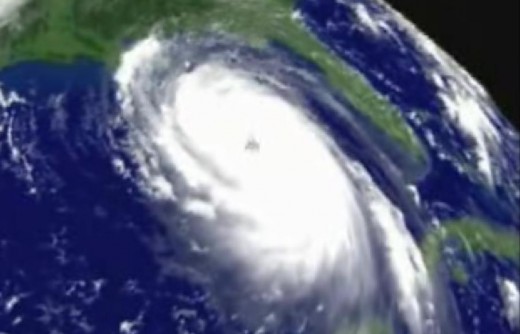Video: Hurricanes, Cyclones and Typhoons
Eastern Coast Lines
Hurricanes, cyclones and typhoons will in best of situations pick on thousands of the best fish in the oceans and feed the masses of people inland. Hurricanes, cyclones and typhoons are always shy of the equator line and will prefer to keep a distance of at least 10 degrees south or north from the equator line. Hurricanes, cyclones and typhoons love the eastern coast lines of continents and therefore shall not be found in the western coastlines of any continent.
Hurricanes, Cyclones and Typhoons Are The Same
But what really are Hurricanes, cyclones and typhoons? They are the same thing and the difference is just the naming depending on where the storm is found. The storm is called Hurricane when in North Atlantic Ocean, Cyclones when in Indian Ocean and Typhoons when in Pacific Ocean. Watch the video below which illustrates the violent nature of Hurricanes, Cyclones and Typhoons.
Katrina Cyclone

Huge Tropical Storm Systems
Hurricanes, cyclones and typhoons are huge tropical storm systems characterized by a large low pressure center and numerous thunderstorms that produce strong winds and flooding rain. The wind flow in a hurricane, cyclone or typhoon is of cyclonic circulation with counterclockwise rotation in the Northern Hemisphere and clockwise rotation in the Southern Hemisphere. The centre of the storm is the “eye” which can be as wide as 60 Km. The most violent activity takes place nearer to the centre.
A Combination of Rain and Fish
The pressure in a tropical cyclone is too low extending up to the sky. This low pressure is an attraction to more clouds towards cyclone’s centre. A Hurricane in Miami will attract all the clouds in as far as California thus making California go without rains for days. This low pressure will attract fish toward its centre and fish likes it. The fish is then pushed upwards into the sky believing it’s a part of the ocean. The moment the storm hit the land, you may just be having a combination of rain and fish.
WarmOcean Water
Hurricanes, cyclones and typhoons develop over warm ocean water, will move away from the equator line and will weaken as soon as they move over land. Hurricanes, cyclones or typhoons will raise the ocean water near the coastline in as much as 7 metres high resulting in flooding of the coast line. The inland regions will get strong winds and heavy rains from the convective clouds that reach inland. Flooding inland will be from heavy showers and rains.
Cumulonimbus Clouds
The convective clouds are the cumulonimbus clouds. Whenever cumulonimbus clouds come too low to the ground, they curl like mushroom with destructive freak winds of over 200 Km/h that will destroy trees, buildings, electric cables and ads boards, animals and including humans. They carry with them successive thunderstorm with turbulences of strong updraft and downdraft forces. By the time it is all over, it will leave behind a trail of destruction and widespread power blackouts. Watch the video below which illustrates the violent nature of Hurricanes, Cyclones and Typhoons.
Aim a Missile at the Cyclone
And because a Hurricane, cyclone or typhoon can be spotted when still in the ocean, the only logical theory is to aim a missile at its centre and destroy the storm. Doing this practically is a completely different thing and it will be a story for another day.
Watch the Video
Watch the video below which illustrates the violent nature of Hurricanes, Cyclones and Typhoons.
Watch the video below which illustrates the violent nature of Hurricanes, Cyclones and Typhoons
If you have liked this article, and you would want this page to keep up and improved, you can help by purchasing some great items from Amazon by following Amazon links and widgets on this page, if you will. A free way to help would be to link back to this webpage from your web page, blog, or discussion forums.
The Author’s page is designed to help beginners and average readers make some money as an extra income to supplement what they may be earning elsewhere - details of which you can find in My Page.









